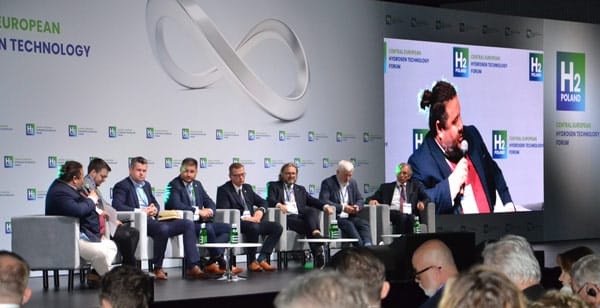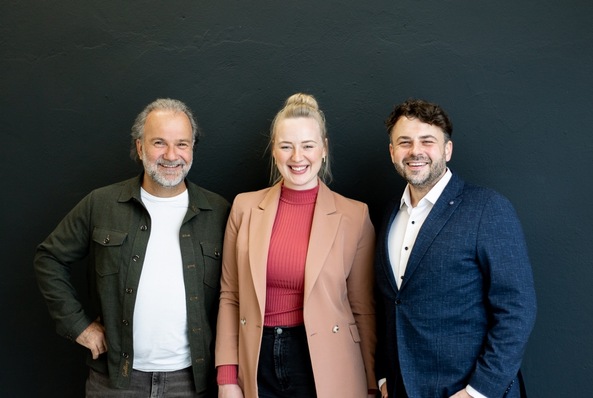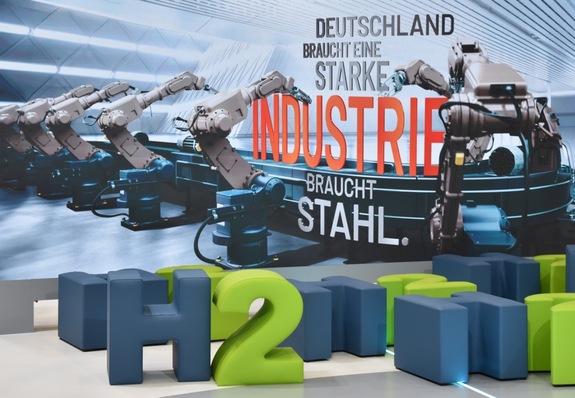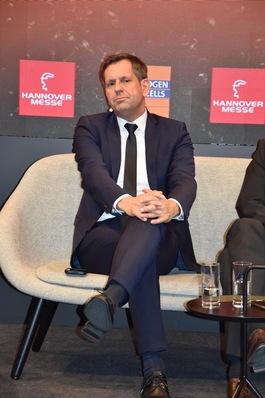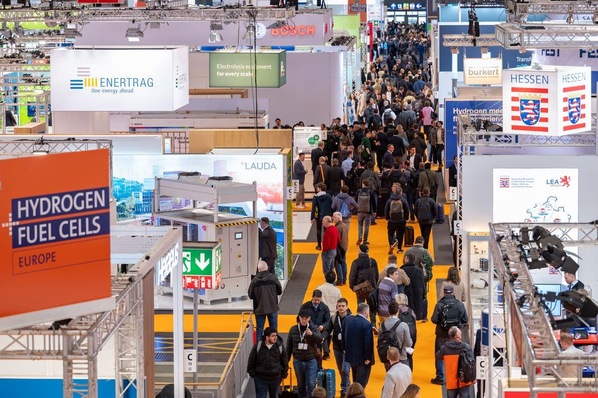Tomoho Umeda, founder of Polish companies Hynfra and Hynfra Energy Storage, led the discussions between the country representatives on the joint enterprise. The Polish businessman, who has Japanese roots, expressed regret that Central and Eastern Europe, or CEE for short, is rarely involved in the rapid development of the hydrogen industry in the European Union: “There’s a lot of nodding but when it comes down to business, CEE tends to be sidelined in key developments.” The three seas hydrogen project intends to change precisely that.
Shared connections
Poland is at the heart of current growth in the Eastern European hydrogen sector. That’s not just because Poland, with its population of almost 40 million people, is by far the biggest economy in Eastern Europe, but due to the large number of underground salt caverns that make it an ideal location for storing hydrogen. A fact that Umeda emphasized several times in his speech.
The countries that want to push forward the development of hydrogen industries in this region have more in common than being overlooked members of the EU. What unites them most is that they are all countries of the former Eastern bloc. This common past means they share certain similarities, as particularly evidenced by their infrastructure and the special regulation of the energy sector.
Umeda highlighted the pipeline infrastructure and heat supply in Central and Eastern Europe. Aside from a dense district heating network, common elements across these countries also include long-distance interregional connections which stem from Soviet times. New networks are also being added, such as the Lithuania-Poland and Poland-Slovakia gas connections which only became operational a few years ago.
Czech representative Vaclav Bystriansky made it clear in his address that these transmission lines as well as zero-emission energy generation have a vital role to play in the development of the hydrogen sector. In his opinion, the old model of east-west transmission is outdated and should be relinquished. He is convinced that there will be more north-south connections in future.
For his country this means working much more closely with its northern neighbors. “Poland has the storage capacity and Czech Republic has the nuclear power plants,” said Bystriansky, summarizing the direction of future cooperation.
Slovakia echoed Bystriansky’s remarks, but adding that the nations of Central and Eastern Europe have a lot they could learn from each other. This was said to include, above all else, learning from the mistakes of others. An essential point that was also stressed by other officials is the potential use of waste incineration for the production of hydrogen. Incineration is currently a weighty issue in Eastern Europe. The view from the Slovakian side: “You shouldn’t just get fixated on renewables alone but instead use what makes sense and satisfies the conditions.”
Estonian delegate Sven Parkel responded that countries in Central and Eastern Europe could only earn a better position in EU committees by joining forces. He said they must represent their interests in Brussels collectively, otherwise they would not be heard by dominant EU countries such as Germany and France. What’s more, Parkel suggested that they should put on a united front when addressing the regulatory elements of the region’s hydrogen industry at an administrative and public authority level.
Ukraine boasts greatest hydrogen potential
István Lepsényi from the Hungarian Hydrogen Technology Association, who took his place right next to the Ukrainian delegate Oleksandr Riepkin, astonished the gathering in Poznań with his particularly political statement. In contrast to the pro-Russian position of Hungarian Prime Minister Viktor Orbán, Lepsényi expressed his personal feelings in relation to Ukraine’s struggle against its Russian aggressor. He hopes Ukraine will soon win and an end will be brought to a horrendous war which the Russians have waged against Ukraine.
Ukraine and its hydrogen potential was one of the thematic high points of the panel discussion which preceded the signing of the joint hydrogen project. Oleksandr Riepkin started by thanking first of all Poland for preventing the certain death of millions of people from Ukraine by opening its hearts and homes and offering all it has to the Ukrainians fleeing the rape and murder of the Russians. The audience responded with almost unceasing applause and cries of solidarity. He also announced that his country would be entering a hydrogen partnership with Poland, saying: “As sisters and brothers, Poland and Ukraine can achieve anything and be a match for anyone.”
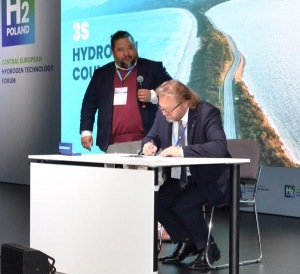
After Riepkin had detailed Ukraine’s options for zero-emission electricity generation, he turned his attention to the existing collaboration with Poland on energy issues. The power connection between the countries has now been reestablished and in future could be extended and utilized for hydrogen production. The Ukrainian suggested that CEE nations should specialize in individual areas, thus sharing the load which would be important for competitiveness in the hydrogen industry.
“Central and Eastern Europe should also step out from under the shadow of Western Europe and itself manufacture the electrolyzer plants that enable hydrogen production. A domination of Western European technology is to be avoided,” the audience in Poznań was told. “Our technology is just as good as German technology – only more affordable,” added Czech delegate Bystriansky.
Riepkin then took a look at the problems that could ensue from hydrogen production in the CEE region. For instance, there are now drought-prone areas where conflicts could arise with agriculture in relation to water supply and land for renewable energy. Producing hydrogen using nuclear power could be an alternative, as expressed by the Czech and Slovakian representatives.
The three seas hydrogen project appeared ready to expand toward Scandinavia, with Estonia and Finland being obvious candidates. Both countries have connected up their gas pipelines in a move that creates promising opportunities for hydrogen grids. There was likewise optimism that the two remaining three seas states – Romania and Bulgaria – will join the hydrogen initiative in the foreseeable future.
Author: Aleksandra Fedorska


